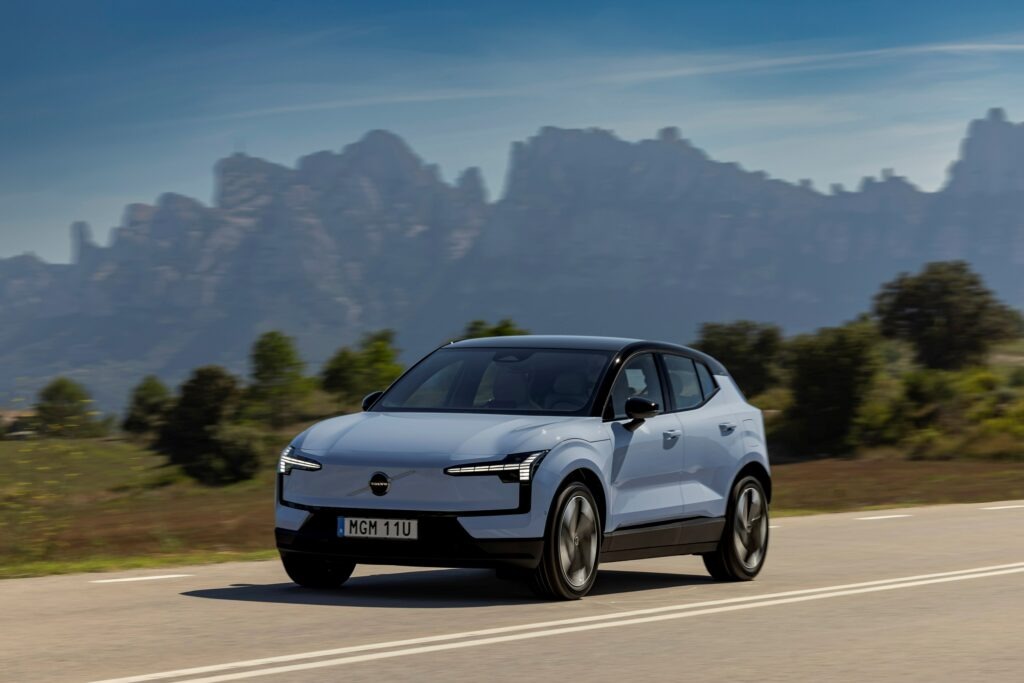Which EV technology sold best in the EU during February?
25 March 2024

The second month of 2024 highlighted some key patterns in EU passenger-car registrations, especially for electric vehicles (EVs). Autovista24 special content editor Phil Curry examines the figures and trends that may define the market this year.
After a turbulent end to 2023, the EU’s news-car market appears to have settled after the first two months of 2024. Compared with February 2023, registrations improved by 10.1% last month, as 883,608 deliveries were made to customers across the continent.
This is according to new data from the European Automobile Manufacturers Association (ACEA). The big four markets all contributed to this registration growth. France led the way with a 13% improvement, followed by Italy (up 12.8%), Spain (up 9.9%), and Germany (up 5.4%).
Across the first two months of 2024, the EU passenger-car market was up by 11.2%, with Germany in the lead thanks to a strong January. Its market was up by 11.8% year-to-date, followed by Italy (up 11.7%), France (up 11.2%), and Spain (up 8.7%).
Despite this positivity, however, there is division in each region’s powertrain registrations. These fluctuations are allowing new countries to establish themselves as key players in market developments. This may prove crucial as the EU looks to promote zero-emission motoring in the future.
EV evolution
The battery-electric vehicle (BEV) market increased registrations by 9% year on year in February. A total of 106,187 units took to EU roads, with a rise that was considerably lower than January’s 28.9% increase.
This suggests that the technology could face a difficult few months ahead. BEVs can no longer rely on Germany to push figures. The country saw all-electric registrations decline by 15.4% in February, following the end of incentives in December 2023.
In addition, two of the EU’s big four markets are struggling to entice buyers towards the powertrain. While Spain recorded a 15.4% improvement in BEV registrations year-on-year, this only equated to 3,804 units. Italy’s tally of 5,007 deliveries was just 3.1% up on February 2023.
The shift in market performance is creating ripples across the bloc. France, which amended its subsidies to counter vehicle non-EU imports, is close to becoming the region’s BEV leader. The country sat just 1,654 units behind Germany. Meanwhile, Belgium and the Netherlands can also be considered top markets for the technology, instead of Spain and Italy.
Belgium saw 9,385 all-electric registrations last month, an improvement of 66.9% compared to last year. The Netherlands increased deliveries by 20.9%, equating to 8,291 BEVs handed to customers.
Therefore, the industry should now look at the big four BEV markets, alongside the usual key players. While Germany’s decline continues, results should stabilise in 2024, especially as business incentives ended earlier than private subsidies last year. Despite the country’s drop, it still recorded 27,479 all-electric deliveries.
Figures in Spain highlighted the work needed to move drivers into BEVs, as registrations were below 4,000 units again. Although EU BEV deliveries improved year-on-year, the powertrain lost 0.1 percentage points of market share, ending February with a 12% hold.
Plug-in pressure for EVs
This drop was picked up by plug-in hybrid (PHEV) deliveries. The powertrain increased its market share to 7.3% from 7.2% last year. This means the plug-in market remained stable, with a 19.3% market share overall.
PHEVs had a strong month in February, outpacing the overall market growth to record an improvement of 11.6%, with 64,351 units delivered. Although this figure is below the BEV total, it highlights how different markets are adjusting to subsidy destabilisation. Additionally, it emphasises the need to drive electrified sales for reluctant consumers.
Germany improved its PHEV registrations by 22.3%, in contrast to its BEV struggles. A total of 14,575 units meant it was the leading market in the month. This was ahead of France, which saw an 11.8% improvement with 11,732 units.
Behind these two markets, Belgium registered 8,385 PHEVs, up by 21.8% year-on-year. This made it the third most popular country for the powertrain. The country’s EV market seems evenly split between the two plug-in technologies.
However, the Netherlands’ EV scale is heavily weighted towards BEVs. Its PHEV registrations improved by just 0.7% with 4,300 units.
In Spain, the balance weighed favourably on the PHEV side. The country saw 5,563 deliveries in February, up 15.6%. Meanwhile, Italy saw PHEV registrations slip by 16.6%, with 4,662 units.
In the year-to-date, both BEVs and PHEVs improved deliveries by 17.4%, showing the closeness of the technologies so far in 2024. Looking at market share, BEVs still lead, thanks to a strong January, with an 11.5% hold. PHEVs also improved their market share, with its 7.5% up by 0.4 percentage points.
Hybrids home in
Hybrids, including full and mild hybrid powertrains, saw registrations across the EU rise by 24.7% last month, as 255,511 units were delivered. This equates to a 28.9% market share, up from 25.5% in February 2023.
A slowdown in petrol registrations is creating a closer battle between the two. Over the first two months of 2023, the difference in market shares between the powertrains was 11.6%. Last month, the two were separated by 6.6%.
All major markets reported growth in hybrid registrations, with France excelling, up by 41.5% with 41,227 deliveries in February. Spain saw an improvement of 26.5%, with Germany (up 16.4%) and Italy (up 16.1%) also helping drive the market forward.
The dynamic between PHEV and hybrid technologies becomes clearer in Belgium and the Netherlands. While the former had strong PHEV registrations, its hybrid deliveries were almost half that of the plug-in technology, with 4,282 units delivered (up 28.2%).
Meanwhile, the Dutch market saw 9,057 PHEV deliveries, creating an increase of 39.1%. This meant it was the most popular powertrain in the country, beating both BEVs and petrol registrations. Hungary, Poland and Romania were the only other five-digit markets in the EU to accomplish this feat.
Inconclusive ICE results
The triumphs and struggles of the EV market in certain countries are reflected in the performance of internal-combustion engine (ICE) models.
While Germany’s BEV market strains, its overall registrations increase in February was down to its diesel market performance. Bucking the trend of declines across all major markets, the country saw diesel deliveries improve by 9.7% in the month, with 42,153 units.
The country also saw a 4.3% diesel increase in January, alongside a solid BEV performance. Germany has always had a strong diesel market, and it appears that this could continue in 2024. However, this performance was not enough to prevent an overall dip in diesel registrations across the EU. The powertrain ended the month down by 5.1% across the bloc.
The petrol market also struggled in February. While its improvement of 6.1% in the EU is positive, this is a smaller increase than was seen in 2023 overall. Belgium saw a decline of 2.2% for the powertrain, alongside five-digit markets Denmark (down 23.8%), Hungary (down 10.1%), the Netherlands (down 15.8%), and Romania (down 24.8%).
This left petrol with a 35.5% market share in the month, down by 1.4 percentage points from February 2023. In the year to date, registrations were up by 5.3%, with a market share of 35.5%, down from 37.4% across the first two months of last year. Diesel still declined, down by 5.2% so far in 2024, with a market share of 13.1%, down from 15.4% in the same period of 2023.



